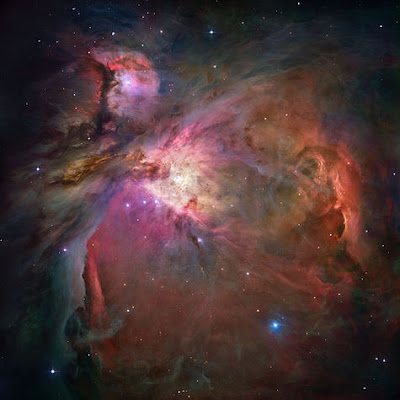
About seven billion years ago, the universe went into a sort of pubescent growth spurt that as far we know hasn't slowed down. Scientists call the growth stimulus dark energy, for lack of a better term or an understanding of the mechanics.
Now they've invented a tool called a laser comb that can measure expansion rates over time periods as short as 10 to 20 years.
Ronald Walsworth, with the Harvard-Smithsonian Center for Astrophysics, offers this as an example: Say you want to figure out if something big, like your house, has moved a millimeter. If you counted on a measuring stick that chalked off miles, you'd never know. But if you had a ruler nicely hashed out by the millimeter, it'd be a cinch.
Laser combs refine the technique of spectroscopy, a process that picks apart a photon's journey from its source to our telescopes by identifying what chemicals it has passed through.
The fingerprints emerge by splitting the light into component wavelengths and comparing absorption lines in its spectrum with the wavelengths of laboratory sources.
The laser combs take a target's light signature one step further. If you've ever sat at a railroad stop and heard the train whistle, you know how it changes pitch as it comes closer or as it recedes down the tracks. The same shift takes place not only in sound waves, but in all wavelengths, including visible and ultraviolet light.
As the universe expands, distant galaxies, which are used to chart the universe's motion, move further away from Earth, with a corresponding shift in their spectra. Current tools to measure the shift would be like using the mile-marker to tag your house's re-location
Scientists know the universe has expanded over billions of years. The laser comb can refine that measurement to well within a human lifetime.
"We have to measure the movement of these distant galaxies to a few centimeters per second and follow this over decades. These speeds are barely faster than a snail's pace," said Antonio Manescau, with the European Southern Observatory.
The ESO says that feat would be like measuring the circumference of Earth to a millimeter (.062 inches).
"Never before have we had the chance to see the shape of the universe change before our eyes. We have inferred it from the cosmic background radiation, but it takes billions of years to see," said Walsworth. "With sensitive tools, in a human time scale we can see change."
To make the measurements, scientists use ultra-short pulses of laser light at many frequencies, each separated by a precise and constant interval. By comparing shifts in the spectra -- which may be a small as a molecule -- researchers expect to be able to determine, for example, how much a distant galaxy has moved over a 10- or 20-year period. The measurements, however, will have to wait until new, extremely large telescopes, currently under development, begin operations.
The technique also can be used to look for Earth-sized planets in other star systems.
|
Bookmark this post:
|
|





0 comments:
Post a Comment